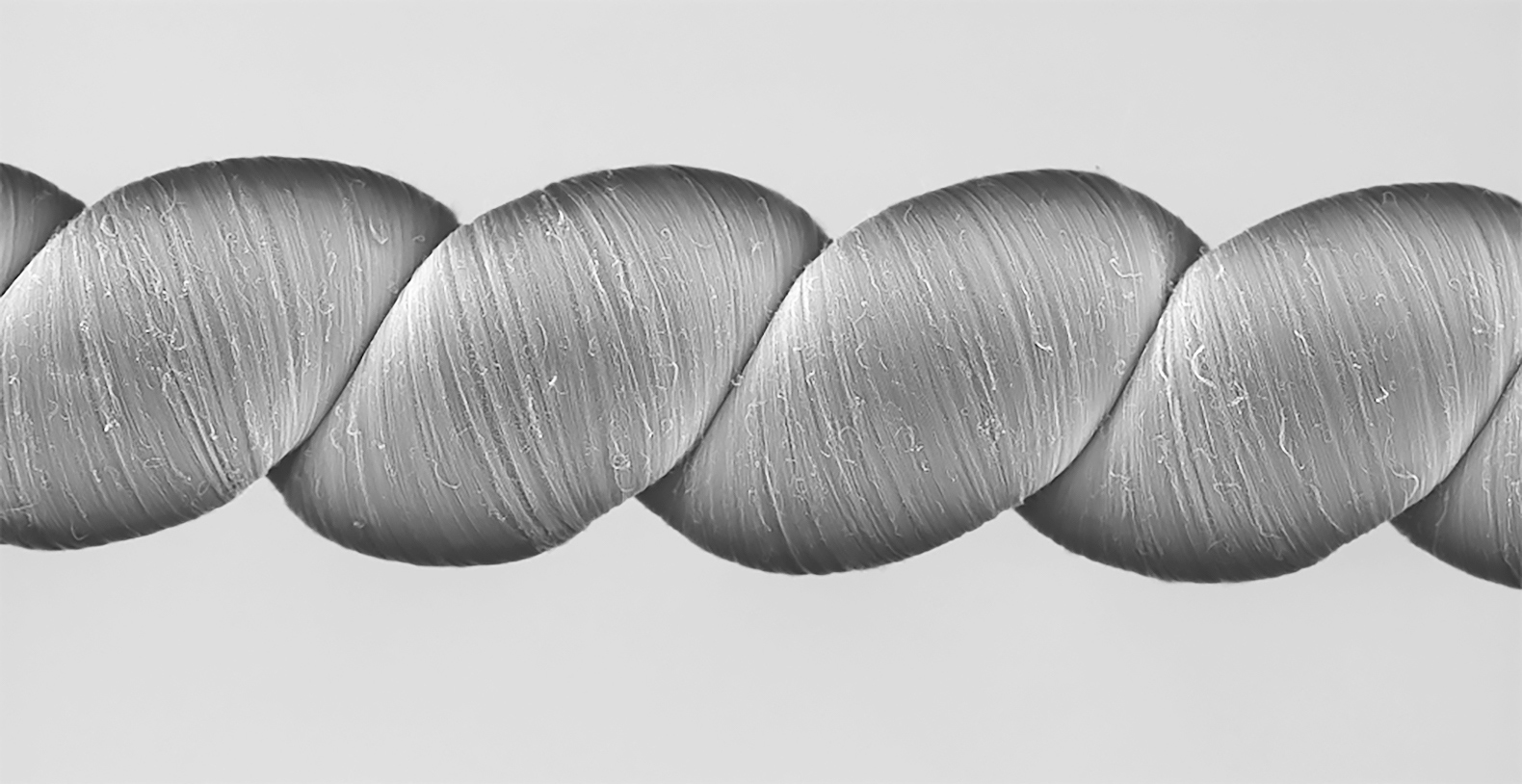Scientists from the University of Texas at Dallas and the Hanyang University located in the South Korea have developed high-tech yarns that have the ability to generate electricity when twisted or stretched. According to the researchers this “Twistorn” yarn and the possible application like harvesting energy from motion of ocean waves of temperature fluctuation etc. when stitched into a shirt these yarns served as self-powered breathing monitor.
Dr Carter Haines, the associate research profession in the Alan G MacDiarmid Nano Tech Institute at UT Dallas and co-lead author of the article said that; “The easiest way to think of Twistron harvesters is, you have a piece of yarn, you stretch it, and out comes electricity.” This article includes researches from Virginia Tech, South Korea, China and Wright-Patterson Air Force base.
These yarns are made up of nanotubes of carbon that are hollow cylinders of carbon that is 10,000 times smaller in diameter than a human hair. The nano-tubes are twist-spun into high strength, lightweight yarns. To add high level of elasticity in the yarn, so much of twist is introduced into the yarns that collide like an over twisted rubber band. In order to be able to generate electricity the yarn must have to be able to either submerged in or coated with an ionically conducting material or an electrolyte that can be simple as a mixture of an ordinary table salt and water.
“Fundamentally, these yarns are super capacitors,” said Dr. Na Li, a research scientist at the NanoTech Institute and co-lead author of the study. “In a normal capacitor, you use energy — like from a battery — to add charges to the capacitor. But in our case, when you insert the carbon nanotube yarn into an electrolyte bath, the yarns are charged by the electrolyte itself. No external battery, or voltage, is needed.”
According to Haines, when a harvester yarn is twisted or stretched, the volume of the carbon nanotube yarn decreases, bringing the electric charges on the yarn closer together and increasing their energy. This increases the voltage associated with the charge stored in the yarn, enabling the harvesting of electricity. Stretching the coiled twistron yarns 30 times a second generated 250 watts per kilogram of peak electrical power when normalized to the harvester’s weight, said Dr. Ray Baughman, director of the NanoTech Institute and a corresponding author of the study.
“Although numerous alternative harvesters have been investigated for many decades, no other reported harvester provides such high electrical power or energy output per cycle as ours for stretching rates between a few cycles per second and 600 cycles per second.”
The researchers also sewed twistron harvesters into a shirt. Normal breathing stretched the yarn and generated an electrical signal, demonstrating its potential as a self-powered respiration sensor.
“Electronic textiles are of major commercial interest, but how are you going to power them?” Baughman said. “Harvesting electrical energy from human motion is one strategy for eliminating the need for batteries. Our yarns produced over a hundred times higher electrical power per weight when stretched compared to other weavable fibres reported in the literature.”
“In the lab we showed that our energy harvesters worked using a solution of table salt as the electrolyte,” said Baughman, who holds the Robert A Welch Distinguished Chair in Chemistry in the School of Natural Sciences and Mathematics. “But we wanted to show that they would also work in ocean water, which is chemically more complex.”
Researchers from the UT Dallas Erik Jonsson School of Engineering and Computer Science and Lintec of America’s Nano-Science and Technology Centre also participated in the study. The investigators have filed a patent on the technology.



